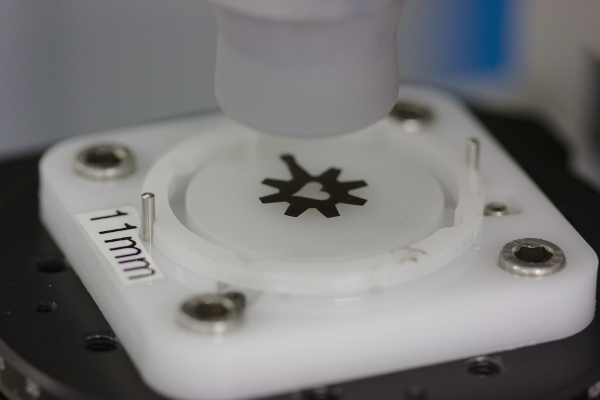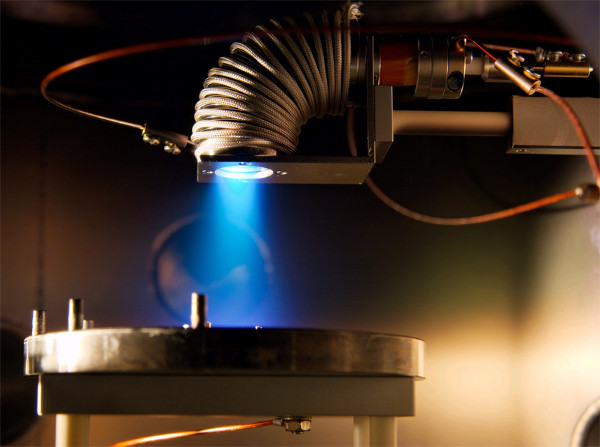In a dielectric elastomer actuator (DEA), the elastomeric membrane is sandwiched between two compliant electrodes. These electrodes must be conductive, and stretchable: two properties that often do not go together. In addition, they must not increase the stiffness of the structure, or they would hinder the strain of the device (in other words, they must be soft and thin). They must be able to repeateadly stretch without degradation. For most of the useful configurations, the electrodes must also be patterned precisely on the surface of the elastomer, with features sizes as small as 100 um.
At EPFL-LMTS we work with a range of technologies to pattern compliant electrodes for DEAs, including:
 Pad-printed carbon-silicone composite electrodes. Carbon-based electrodes are widely used within the DEA community because of their low stiffening impact, but can be challenging to precisely pattern them on the elastomer membrane. We use a stamping method called pad-printing to apply a thin patterned layer of a carbon/silicone mixture on a silicone membrane. The electrode is subsequently crosslinked in an oven, which produces very resilient electrodes with a strong adhesion to the elastomeric membrane. There are more details on patterning compliant electrodes for DEAs on this page.
Pad-printed carbon-silicone composite electrodes. Carbon-based electrodes are widely used within the DEA community because of their low stiffening impact, but can be challenging to precisely pattern them on the elastomer membrane. We use a stamping method called pad-printing to apply a thin patterned layer of a carbon/silicone mixture on a silicone membrane. The electrode is subsequently crosslinked in an oven, which produces very resilient electrodes with a strong adhesion to the elastomeric membrane. There are more details on patterning compliant electrodes for DEAs on this page. Plasma bonding of laser etched carbon-based electrodes onto thin elastomer electrodes. This technique allows high-resolution patterning of large area cast electrode films by laser ablation, and is particularly suited to patterning electrodes on extremely thin and soft elastomer membranes. More details on the laser ablation technique on this page.
Plasma bonding of laser etched carbon-based electrodes onto thin elastomer electrodes. This technique allows high-resolution patterning of large area cast electrode films by laser ablation, and is particularly suited to patterning electrodes on extremely thin and soft elastomer membranes. More details on the laser ablation technique on this page. Low energy metal ion implantation. This produces metallic very conductive electrodes, which can be patterned with a shadow mask or by a lift-off process. The main drawback of this method is that it is made in a vacuum chamber and is therefore very time-consuming. We have more details on metal ion implantation on this page.
Low energy metal ion implantation. This produces metallic very conductive electrodes, which can be patterned with a shadow mask or by a lift-off process. The main drawback of this method is that it is made in a vacuum chamber and is therefore very time-consuming. We have more details on metal ion implantation on this page.
Review on compliant electrodes for DEAs
Please note that the publication lists from Infoscience integrated into the EPFL website, lab or people pages are frozen following the launch of the new version of platform. The owners of these pages are invited to recreate their publication list from Infoscience. For any assistance, please consult the Infoscience help or contact support.